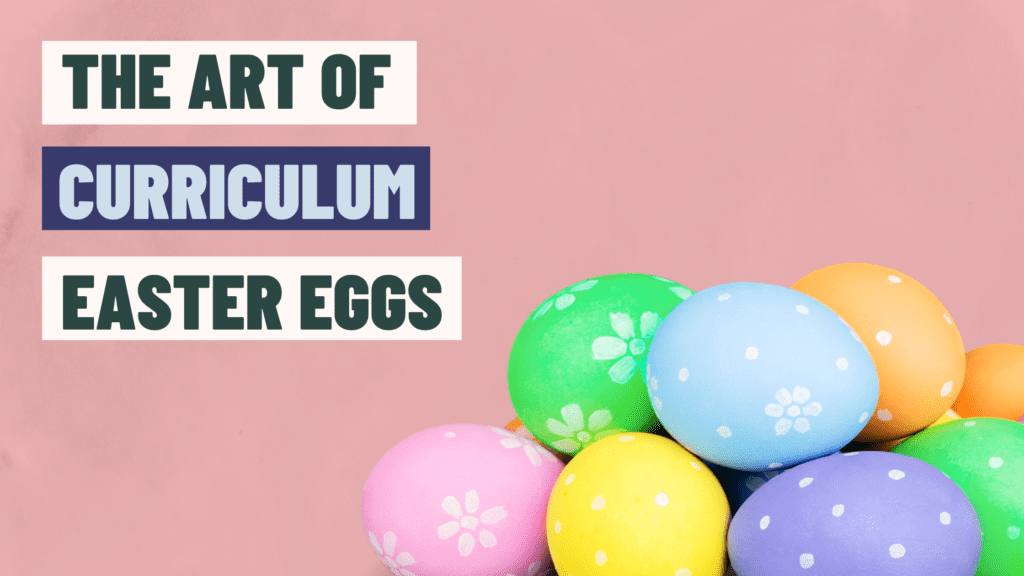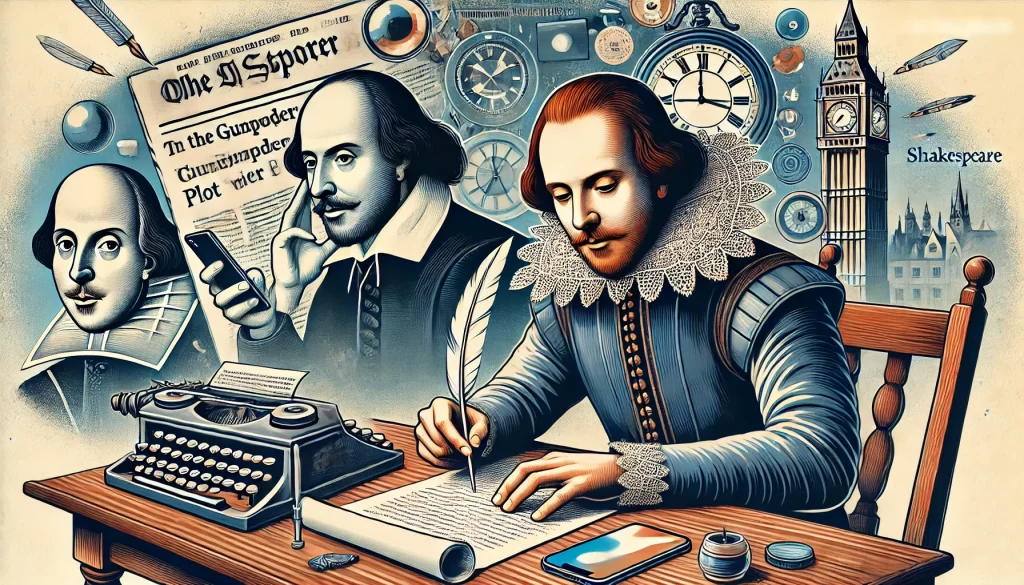Can curriculum Easter Eggs boost student engagement and create a more immersive experience? In the world of video games, movies, and software, “Easter eggs” are hidden features or inside jokes that reward attentive users. But what if we could bring this concept into our classrooms?
Table of Contents

What Are Curriculum Easter Eggs?
Curriculum Easter eggs are hidden content, references, or connections strategically placed throughout your course materials. They’re not essential to understanding the core content, but they offer additional layers of meaning, fun, or insight for students who discover them.

Why Use Curriculum Easter Eggs?
- Increased Engagement: Easter eggs encourage students to pay closer attention to course materials, always on the lookout for hidden content.
- Reward for Curiosity: They provide a sense of accomplishment and insider knowledge for students who discover them.
- Building Community: Shared discoveries can foster discussion and a sense of community among students.
- Deeper Learning: Easter eggs can provide additional context or connections that deepen understanding of the material.

My Experience: Algorithmic Storytelling AI’s Between the Text Tales
In my recent curriculum revamp, I introduced a series of Easter eggs I call “Algorithmic Storytelling AI’s Between the Text Tales.” Here’s how it works:
- I use AI to generate short scenes featuring characters from one unit interacting with characters from the next unit.
- These scenes are hidden in our Learning Management System (LMS) for students to discover.
- The scenes serve as a preview for the upcoming unit and create connections between different texts we study.
For example, a scene might feature Macbeth having a conversation with Victor Frankenstein about the consequences of ambition. This not only creates an intriguing connection between the two texts but also primes students to think about thematic links as we transition between units.
Another Example: Shakespeare Pens Macbeth
Another Easter egg series I’ve implemented is “Shakespeare Pens Macbeth.” These are vignettes where Shakespeare is depicted considering his present context (our historical context) surrounding the Gunpowder Plot and writing to appeal to King James. There’s one vignette per act of the play, hidden throughout the unit materials. This serves multiple purposes:
- Provides historical context
- Creates connections between literature and history
- Offers a reward for curious students who find them
- Deepens understanding of Shakespeare’s writing process and influences

How to Implement Curriculum Easter Eggs
- Start Small: Begin with one or two Easter eggs per unit. You can always add more as you get comfortable with the concept.
- Vary the Content: Use a mix of text, images, audio, or video to keep things interesting.
- Make Them Discoverable: While Easter eggs should be hidden, they shouldn’t be impossible to find. Consider giving subtle clues or hints.
- Ensure Relevance: Each Easter egg should add value, whether it’s additional insight, a fun connection, or a thought-provoking question.
- Track Discoveries: Consider creating a class ‘achievement board’ where students can share their discoveries.
Implementing Interactive Easter Eggs with Technology
One exciting way to create interactive Easter eggs is by using technology to provide immediate feedback and rewards to students. Here’s an idea I’m exploring:
Hidden Google Forms Triggering Automated Emails
- Create Google Forms with questions related to your Easter eggs or curriculum content.
- Hide these forms in your Learning Management System (LMS). They could be disguised as regular links, hidden behind images, or accessed through solving a puzzle.
- Set up automated emails using Google Forms’ response feature.
- When a student finds and correctly completes a form, they automatically receive a congratulatory email with bonus content, a clue to the next Easter egg, or even a digital badge.
This system allows for:
- Immediate feedback and reward for students
- Tracking of which students are engaging with the Easter eggs
- Delivery of personalized content based on student interactions
- Creation of a multi-step treasure hunt throughout your curriculum
For example, in the Macbeth unit, I could hide a form asking about the historical context of the play. When completed correctly, it triggers an email with one of the “Shakespeare Pens Macbeth” vignettes, providing deeper insight into the writing process and historical influences.
This approach not only makes the Easter egg hunt more interactive but also helps students feel a sense of accomplishment and excitement when they receive that surprise email. Plus, it allows you to provide more substantial bonus content without cluttering my main course materials.

Ideas for English Curriculum Easter Eggs
- Hidden Character Backstories: Create short backstories for minor characters in a novel and hide them throughout your LMS.
- Author Cameos: Insert fun facts or quotes from authors in unexpected places in your course materials.
- Thematic Playlists: Create hidden Spotify playlists that relate to themes or characters in your current text.
- Bonus Discussion Questions: Hide thought-provoking questions that aren’t part of the regular assignments but offer extra credit for students who find and answer them.
- Cross-Text References: Like my AI-generated scenes, create connections between different texts in your curriculum.
- Acrostic Messages: Hide acrostic messages in assignment instructions or reading materials.
- Bonus Content: Unlock special content for students who complete certain challenging assignments or discover a certain number of Easter eggs.
Conclusion
Incorporating Easter eggs into your curriculum can transform your classroom into a more engaging, interactive space. It encourages students to approach your course materials with curiosity and attention to detail, skills that will serve them well beyond the English classroom.
So, why not give it a try? Your students might just surprise you with their enthusiasm for the hunt. And who knows? You might find yourself having more fun with your curriculum design too!
I talk more about how I am using Easter Eggs in my podcast! Check out the episode here.
